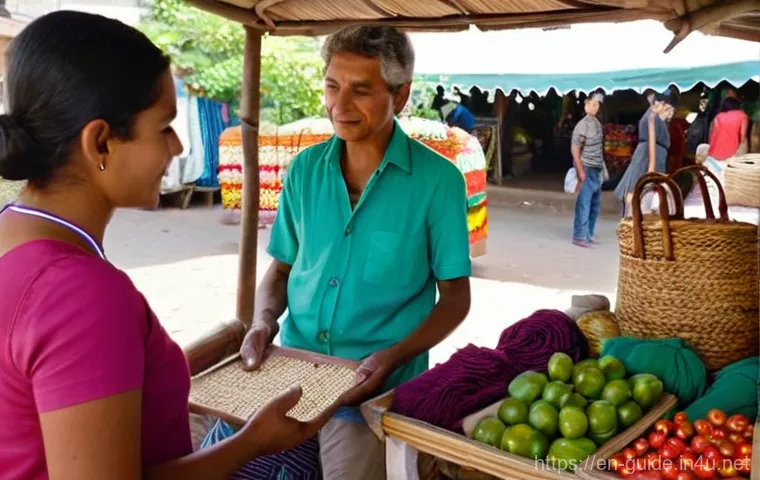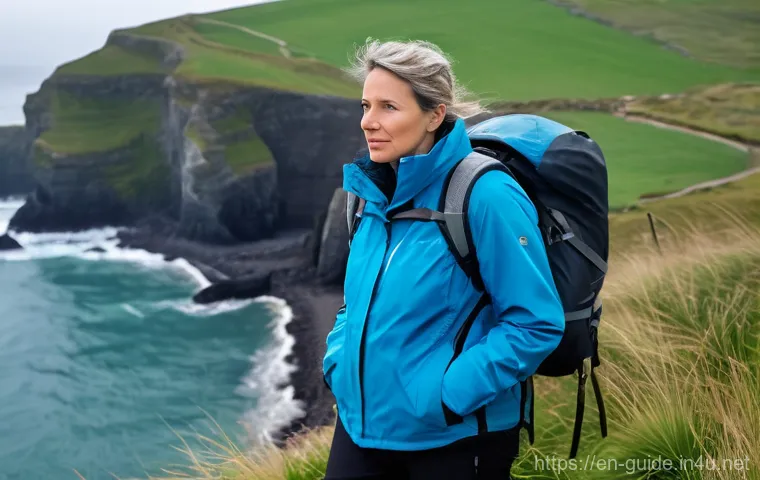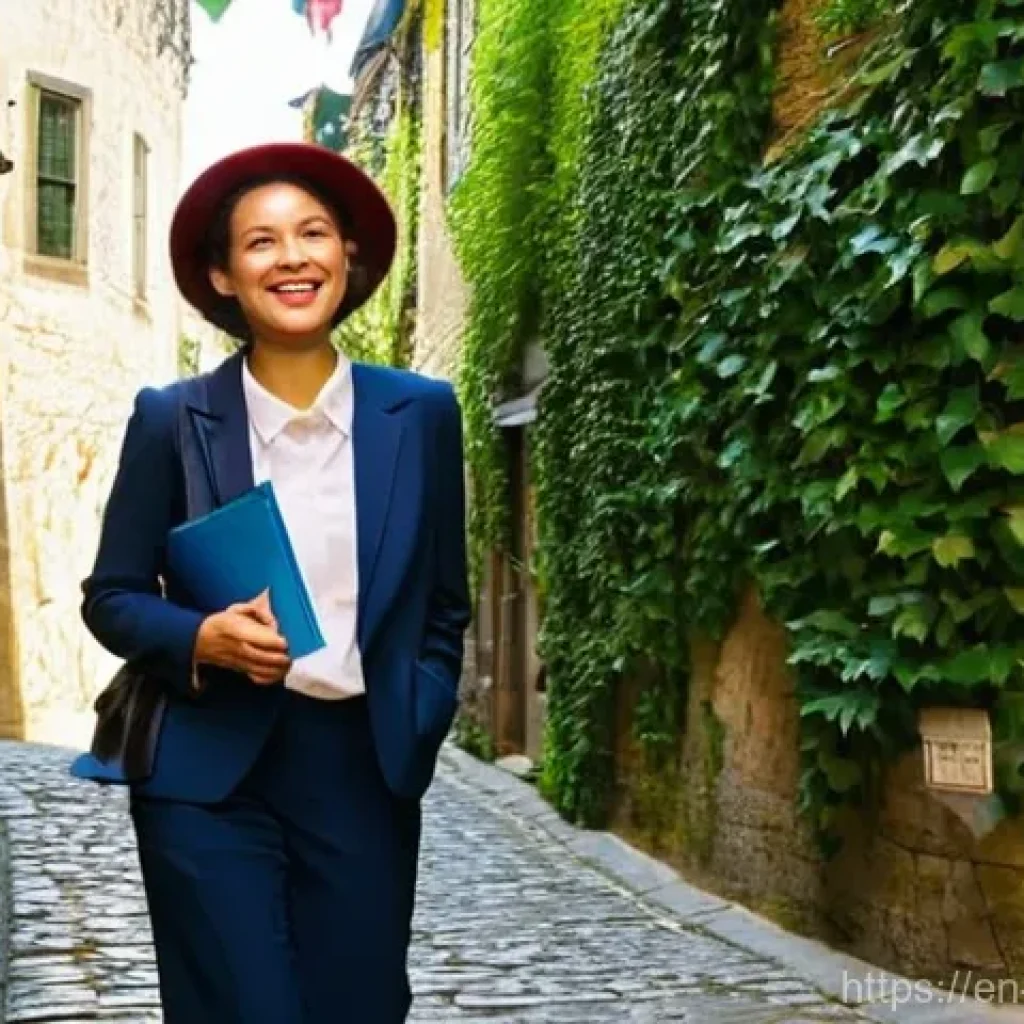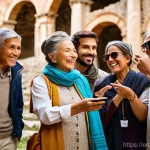Hey fellow travel buffs and future guiding stars! You know, I’ve spent countless hours exploring incredible places and, let me tell you, the difference between a good tour and an absolutely legendary one often boils down to one thing: a guide’s ability to truly connect through language.
It’s not just about perfect grammar; it’s about storytelling, cultural understanding, and making every single guest feel understood and excited. From my own observations, mastering these linguistic superpowers can seriously boost your confidence and leave your visitors raving about their experience.
Ready to transform your tours from great to absolutely unforgettable? Let’s dive in and truly discover how!
Mastering the Art of Engaging Conversations

You know, it’s one thing to rattle off facts about a landmark, but it’s another entirely to weave a narrative that truly captivates your audience. From my own adventures, I’ve seen guides who can recite historical dates flawlessly, yet their tours feel a bit…
flat. The magic truly happens when you can shift from simply informing to actively engaging, making every guest feel like they’re part of a shared discovery.
This isn’t just about knowing a language; it’s about mastering its rhythm, its humor, and its capacity for connection. Think about how a skilled storyteller uses pauses, intonation, and even a well-placed joke to draw you in.
That’s the level of linguistic artistry we’re aiming for, making your guests remember the feeling of the tour, not just the facts. I’ve found that practicing improvisational speaking, even just describing your morning coffee run to a friend as if it were an epic journey, can dramatically improve your ability to think on your feet and make your words dance.
It transforms a standard itinerary into an unforgettable experience, leaving everyone feeling like they’ve truly connected with the destination and, more importantly, with you.
Beyond the Script: Embracing Spontaneity
When you’re leading a group, things rarely go exactly as planned, right? There’s always that unexpected question, a sudden shift in weather, or a unique observation from a guest.
This is where your ability to pivot linguistically becomes a superpower. I used to worry about having the perfect answer for everything, but I quickly learned that authenticity and quick thinking are far more valuable.
Being able to explain a local custom in an impromptu Q&A, or simply engaging in a friendly chat about someone’s hometown, builds a deeper rapport than any rehearsed monologue ever could.
It’s about being present and letting the conversation flow naturally, much like navigating a busy market without a map – you trust your instincts and enjoy the unexpected detours.
This means being comfortable enough with your chosen language to step away from the prepared notes and truly converse, making the tour a dynamic, living experience rather than a static presentation.
Crafting Memorable Anecdotes
Facts are important, but stories are what truly stick. I remember one guide who, instead of just telling us about a historic building, shared a hilarious personal anecdote about getting lost in its labyrinthine halls during a student trip.
Suddenly, the old stones came alive, and we all laughed along, forging an instant connection. This isn’t about fabricating tales, of course, but about finding the human element in every site and presenting it with a flair that only you can bring.
Think about local legends, quirky historical tidbits, or even funny observations from your own experiences in the area. These small, personalized narratives transform your tour from a mere sightseeing trip into a journey filled with character and warmth, making your guests feel like they’re getting an exclusive, insider’s peek into the local culture.
It’s these moments of shared storytelling that truly elevate a tour and make it unforgettable.
Tuning In: The Power of Active Listening and Cultural Cues
You know, it’s easy to focus solely on what *we* want to say as guides, but I’ve found that some of the most profound connections happen when we truly *listen*.
It’s not just about understanding words; it’s about picking up on cultural nuances, unspoken questions, and the subtle cues that tell you what your guests are truly interested in.
When I first started, I was so busy trying to deliver all my carefully rehearsed information that I probably missed half of what my guests were trying to communicate.
Now, I make it a point to pause, observe, and ask open-ended questions. This approach not only makes guests feel heard and valued, but it also provides invaluable feedback, allowing you to tailor the experience in real-time.
For instance, if you notice a group lingering longer at a particular art piece or asking more questions about local cuisine, you can subtly shift your focus to delve deeper into those topics.
This responsive guiding transforms a generic tour into a highly personalized journey, which, let’s be honest, is what everyone truly wants. It’s like being a detective of delight, constantly searching for those small indicators that lead to a truly exceptional experience.
Decoding Non-Verbal Communication
Language isn’t just spoken words; it’s also a rich tapestry of gestures, expressions, and body language. I’ve been in situations where a guest, despite speaking excellent English, might give a subtle shrug or a hesitant look that tells you they’re not quite following, or perhaps they’re uncomfortable.
Learning to read these non-verbal cues is absolutely critical, especially when you’re guiding people from diverse cultural backgrounds. In some cultures, direct eye contact might be a sign of respect, while in others, it could be perceived as aggressive.
A simple nod might mean agreement, or it could simply mean “I hear you, but I don’t necessarily agree.” Through my own travels, I’ve learned that observing and subtly mirroring positive body language can create a sense of ease and understanding without a single word being spoken.
It’s about building bridges beyond verbal communication, fostering a connection that transcends linguistic barriers and makes everyone feel at home.
Navigating Cultural Sensitivities with Grace
This is where active listening really shines, because it helps you avoid potential cultural missteps. I once had a guest from a very reserved culture who seemed a bit withdrawn, and initially, I worried they weren’t enjoying the tour.
Instead of pushing for more engagement, I subtly observed their comfort level and adjusted my approach, giving them more space and less direct attention, while still ensuring they had all the information they needed.
Later, they quietly expressed immense gratitude for understanding their need for a less boisterous experience. It taught me that sometimes, the best way to communicate understanding is through respectful silence and observation.
Being attuned to different cultural norms – whether it’s about personal space, humor, or even gift-giving – demonstrates a deep level of professionalism and empathy.
It’s about ensuring that every guest feels respected and understood, creating an inclusive and genuinely welcoming atmosphere for everyone on your tour.
Cultivating Confidence: Your Voice as Your Guiding Star
You know, I remember my early days, standing in front of a group, my heart pounding, convinced everyone could hear the wobble in my voice. It’s a universal feeling, I think, for anyone stepping into a public-facing role.
But what I quickly learned, and what I want to share with you, is that confidence isn’t something you’re born with; it’s something you *build*, brick by linguistic brick.
It’s about finding your authentic voice and trusting that what you have to say is valuable. When you speak with conviction, even if you stumble over a word, your passion and knowledge shine through.
Your guests are looking to you for direction and assurance, and a confident delivery, even if the content isn’t absolutely perfect, goes a long way in establishing trust and making them feel like they’re in capable hands.
I’ve personally found that the more I practiced, the more natural and authoritative my voice became, transforming from a hesitant murmur to a guiding star for my groups.
Overcoming Common Linguistic Hurdles
Let’s be real, no one is perfect, and even seasoned guides trip over their words sometimes. I’ve certainly had my share of moments where I’ve fumbled a tricky pronunciation or momentarily forgotten a specific term.
The key isn’t to never make a mistake, but to handle it gracefully. My go-to strategy is usually a quick, lighthearted acknowledgment – “Oops, tongue-tied there!” – or simply rephrasing if I catch myself.
Don’t let a minor slip derail your entire flow. One common hurdle I’ve observed is the tendency to speak too quickly when nervous. Consciously slowing down, enunciating clearly, and taking natural pauses can make a massive difference in how your words are received.
Remember, your audience would rather you speak clearly and confidently at a moderate pace than rush through information, leaving them confused. It’s all part of the learning curve, and every little challenge overcome builds that linguistic resilience we all strive for.
Projecting Authority Through Clarity and Tone
Your voice isn’t just a vehicle for words; it’s a powerful tool for conveying authority and expertise. Think about the difference between a hesitant question and a firm, clear statement.
As a guide, you need to be the anchor, the person who knows the way. This doesn’t mean being stiff or overly formal; it means speaking with conviction, using appropriate intonation to highlight key information, and maintaining a steady, engaging pace.
I’ve found that varying my tone, sometimes dropping it slightly for a dramatic reveal, or raising it a bit for enthusiasm, keeps guests captivated. Also, simple things like avoiding “umms” and “uhhs” (which we all do!) and practicing clear articulation can significantly enhance your perceived professionalism.
It’s about harnessing the full spectrum of your vocal abilities to create an immersive and trustworthy experience for every single person you’re guiding.
Weaving Local Lore: Beyond the Tourist Brochure
You know, anyone can read a Wikipedia page about a city’s history, but what truly makes a tour unforgettable is when you bring the *soul* of a place to life.
I’ve always aimed to go beyond the typical “brochure facts” and delve into the local lore, the quirky traditions, and the untold stories that give a destination its unique flavor.
It’s those little nuggets of insider information, shared with genuine enthusiasm, that transform a simple visit into an immersive cultural experience.
I remember leading a tour through a quaint fishing village, and instead of just listing its historical significance, I shared a local legend about a heartbroken mermaid said to haunt its shores.
Suddenly, the ancient harbor felt alive with magic and mystery, and my guests were absolutely enthralled. These are the moments that stick with people long after they’ve returned home, because you’ve tapped into something deeper than just sightseeing.
Unearthing Hidden Gems and Local Stories
This is where your research goes beyond official historical records. I’m talking about chatting with local shopkeepers, lingering in cafes, and even sifting through local community forums online.
You’d be amazed at the wealth of information you can uncover – old family histories, peculiar town traditions, or even just funny anecdotes about local characters.
I once stumbled upon a story about a baker who used to hide love letters in his bread loaves back in the 19th century, and sharing that small detail as we passed his old bakery added an incredible layer of charm to the tour.
These aren’t things you’ll find in standard guidebooks, and that’s precisely what makes them so special. They give your guests a sense of being let in on a secret, providing an authentic taste of the local culture that they wouldn’t get otherwise.
Connecting with Local Artisans and Entrepreneurs
One of the most rewarding aspects of this job is fostering genuine connections with the people who make a place tick. I’ve made it a point to seek out local artisans, small business owners, and community leaders.
By understanding their stories and struggles, I can then weave these narratives into my tours, offering my guests a more human-centered perspective. For instance, instead of just pointing out a beautiful handicraft, I might introduce the artisan who crafted it, allowing my guests to hear their story directly or at least share a snippet of it.
This not only supports the local economy but also creates a much richer, more personal experience. Guests appreciate knowing that their visit is having a positive impact and that they’re connecting with the heart of the community, not just its storefronts.
It elevates the entire experience from a transaction to a meaningful interaction.
Navigating Challenges: Language as Your Ultimate Tool

Let’s be honest, touring isn’t always sunshine and smooth sailing. There are bound to be unexpected bumps – a sudden downpour, a missed connection, or even a misunderstanding.
In these moments, your linguistic prowess becomes your absolute best friend. It’s not just about giving directions; it’s about calmly reassuring a worried guest, skillfully de-escalating a tense situation, or finding creative solutions on the fly.
I’ve personally experienced situations where clear, empathetic communication turned a potential disaster into a minor inconvenience, simply because I was able to explain the situation clearly, apologize sincerely, and outline the next steps with confidence.
This isn’t just about having a wide vocabulary; it’s about mastering the art of diplomacy and problem-solving through effective language, making your guests feel secure and cared for no matter what comes their way.
De-escalating Misunderstandings with Clarity
Misunderstandings can pop up from anywhere, whether it’s a misinterpreted instruction or a cultural difference that causes friction. My strategy has always been to approach these moments with immediate clarity and calm.
Instead of letting tension build, I jump in to clarify, often by rephrasing or asking open-ended questions to pinpoint the source of confusion. For example, if a guest seems frustrated about a change in the itinerary, I don’t just state the new plan; I explain *why* the change was necessary, acknowledge their potential disappointment, and then present the new option positively.
It’s about validating their feelings while gently guiding them to a solution. I’ve found that a gentle tone, even when delivering inconvenient news, can work wonders in keeping everyone feeling heard and respected, turning a potentially negative moment into a display of your exceptional leadership.
Handling Emergencies and Unexpected Situations
This is where your language skills aren’t just an asset, they’re a lifeline. Imagine a medical emergency or a sudden closure of a planned attraction. In these high-stress moments, the ability to communicate clearly, concisely, and calmly is paramount.
I always make sure I know the local emergency phrases, even if I’m generally fluent in the local language, because specifics matter when every second counts.
Furthermore, being able to quickly explain the situation to your guests, manage their expectations, and provide clear instructions for alternative plans or next steps is critical for their safety and peace of mind.
I remember one time a sudden storm closed a popular hiking trail, and I had to quickly pivot, explain the safety reasons, and then offer an exciting indoor alternative, all while keeping the group’s morale high.
It was challenging, but good communication made all the difference in turning a potentially sour day into a memorable adventure.
| Common Linguistic Challenge | Effective Communication Strategy | Impact on Tour Experience |
|---|---|---|
| Stumbling over unfamiliar local names | Practice pronunciation thoroughly; use phonetic guides; if unsure, respectfully ask a local or acknowledge the challenge with a smile. | Enhances professionalism and respect for local culture; builds rapport. |
| Guests asking questions you don’t know the answer to | Admit gracefully, “That’s a fantastic question! I don’t have that specific detail right now, but I’ll make a note of it.” Offer to look it up or redirect to another interesting fact. | Maintains credibility; shows honesty and a willingness to learn; keeps the flow positive. |
| Difficulty understanding diverse accents | Actively listen; ask clarifying questions respectfully, “Could you repeat that, please?” or “Just to be sure I understand…” Focus on keywords and context. | Ensures guests feel heard; prevents misinterpretations; builds a patient and inclusive atmosphere. |
| Monotonous delivery, leading to disengagement | Varying tone, pace, and volume; incorporate storytelling and personal anecdotes; use engaging body language and eye contact. | Keeps guests captivated and interested; makes information memorable and relatable. |
| Over-relying on complex vocabulary | Use clear, simple language; explain jargon; check for understanding periodically by asking, “Does that make sense?” or “Any questions so far?” | Ensures all guests understand; avoids confusion and makes the tour accessible to everyone. |
Immersion and Iteration: Your Continuous Language Journey
You know, learning a language isn’t a destination; it’s a journey, especially when you’re using it every single day as a tour guide. I’ve found that the best guides are the ones who are constantly, almost instinctively, looking for ways to refine their communication.
It’s not just about formal classes (though those are great!); it’s about soaking up the language and culture in every possible way. From listening to local radio stations to practicing everyday conversations with shopkeepers, every interaction is a chance to improve.
This continuous immersion isn’t just about adding new words to your vocabulary; it’s about understanding the rhythm of local speech, the nuances of humor, and the subtle cultural cues that make your language truly authentic.
For me, it feels less like “studying” and more like living and breathing the experience, making every day an opportunity to become an even better communicator and, by extension, a more unforgettable guide.
Embracing Local Media for Authentic Learning
One of my favorite, and most effective, methods for staying sharp is diving headfirst into local media. Forget the textbooks for a bit; turn on the local news, listen to popular podcasts, or even binge-watch some regional TV shows.
I remember when I was guiding in a new city, I’d listen to the local morning radio show on my way to pick up guests. Not only did it help me pick up on current events and common slang, but it also gave me a real feel for the local humor and everyday concerns.
It’s a fantastic, low-pressure way to absorb natural speech patterns and expand your cultural lexicon in an organic way. Plus, it gives you plenty of conversational fodder – “Did you catch that story on the local news about the new street festival?” – which makes your interactions with guests feel much more current and genuine.
The Power of Peer Feedback and Self-Reflection
Even after years of guiding, I still actively seek feedback and reflect on my own performance. Sometimes, we’re blind to our own habits or areas where we could improve.
I’ve found it incredibly valuable to occasionally record myself during a practice session or even ask a trusted colleague to observe a portion of my tour.
It’s amazing what you can pick up – maybe you’re rushing through certain sections, or perhaps your vocal variety could use a boost. Critically, don’t be afraid to ask guests for their thoughts, even if it’s just a casual “Is there anything I could have explained more clearly?” This open-minded approach, combined with regular self-assessment after each tour, allows for continuous growth.
It’s how we refine our craft, ensuring that each tour we lead is a step up from the last, constantly polishing our linguistic skills to shine even brighter.
Personalizing the Experience: Connecting on a Deeper Level
You know, what truly sets a guide apart isn’t just their knowledge, but their ability to make every single guest feel seen, heard, and genuinely cared for.
From my experience, the magic happens when you move beyond a generic presentation and start tailoring the experience to the unique individuals in front of you.
It’s about creating those small, personal connections that transform a group of strangers into a shared community for the duration of your tour. This often involves using your language skills not just to inform, but to truly empathize, understand individual interests, and respond to their unspoken needs.
When you make the effort to connect on this deeper level, your guests don’t just remember the sights; they remember how you made them feel, and that’s the greatest compliment a guide can receive.
Remembering Names and Small Details
This might seem like a minor point, but I’ve found it to be incredibly powerful. When you remember a guest’s name, or recall a small detail they mentioned earlier – perhaps where they’re from, or a particular interest they expressed – it creates an instant feeling of recognition and warmth.
It tells them you were truly listening and that they’re more than just another face in the crowd. I make a conscious effort to learn names early on, perhaps during introductions, and then subtly weave them into my commentary or questions throughout the day.
“Sarah, you mentioned you’re a history buff; this next site has a fascinating story…” These little personal touches, delivered naturally and sincerely, make a huge difference in building rapport and making each guest feel uniquely valued.
It’s those moments of genuine connection that turn a good tour into an extraordinary one.
Tailoring Information to Individual Interests
Every group is a mosaic of different personalities and interests, and your ability to adapt your narrative on the fly is a game-changer. I always try to gauge what my guests are passionate about early on – are they photographers, foodies, history buffs, or adventurers?
Once I have a general sense, I subtly weave in extra details or anecdotes that align with those interests. For example, if I have a budding architect in the group, I might spend a bit more time highlighting the structural elements of a building, or if there’s a foodie, I’ll point out local eateries and culinary traditions.
This doesn’t mean abandoning your core script, but rather adding layers of personalized information that resonate with specific individuals. It makes the tour feel bespoke and incredibly thoughtful, ensuring that everyone leaves with memories that truly speak to their personal curiosities and passions.
글을 마치며
Whew! What a journey we’ve taken together, diving deep into the art of connecting, guiding, and truly touching the hearts of those we lead. From mastering the nuances of spontaneous conversation to subtly reading cultural cues and building rock-solid confidence in our own voices, it’s clear that being an impactful communicator is a continuous, exhilarating process. Remember, every interaction is a chance to grow, to learn, and to sprinkle a little more magic into someone’s day. It’s about being present, authentic, and genuinely passionate, allowing your unique light to shine through in every word and gesture. Keep practicing, keep listening, and most importantly, keep nurturing that incredible ability to turn a simple tour into an unforgettable adventure for everyone you encounter.
알아두면 쓸모 있는 정보
1. Always carry a small notebook or use your phone to jot down interesting local facts, anecdotes, or guest questions you couldn’t answer on the spot. This ensures you’re constantly building your knowledge base and can address similar queries more confidently in the future.
2. Before each tour, spend 10-15 minutes visualizing a successful, engaging experience. Imagine yourself confidently addressing questions, gracefully handling unexpected situations, and genuinely connecting with your guests. This mental rehearsal can significantly boost your real-world performance.
3. Actively seek out opportunities for informal language practice. Strike up conversations with locals at cafes, markets, or public transport. It’s a fantastic way to pick up colloquialisms, understand local humor, and keep your ear tuned to natural speech patterns, far more effectively than any textbook.
4. Invest in a good quality portable microphone and speaker system, especially for larger groups or noisy environments. Clear audio ensures your message is always heard, reducing frustration for guests and allowing you to speak naturally without straining your voice. It’s a small investment that pays huge dividends in guest satisfaction.
5. After each tour, take a few moments for self-reflection. What went well? What could have been better? Did you connect with everyone? This habit of mindful review helps pinpoint areas for improvement, allowing you to iterate and refine your approach consistently, making every subsequent experience even better.
중요 사항 정리
At the heart of truly exceptional guiding lies the ability to weave a narrative that goes beyond mere facts, transforming a tour into a shared, memorable experience. This means mastering spontaneous linguistic improvisation, actively listening to guests’ unspoken cues, and confidently projecting your unique voice. Cultivating strong local connections and delving into authentic lore elevates the experience, providing insights rarely found in guidebooks. Crucially, your language skills become your ultimate tool for navigating challenges, ensuring safety, and gracefully de-escalating misunderstandings, always reassuring your guests. Continuous immersion in the local culture and consistent self-reflection are key to perpetual growth, allowing you to personalize interactions and forge deeper, lasting connections. Remember, it’s not just about what you say, but how you make people feel, building trust and authority through genuine expertise and an unforgettable human touch.
Frequently Asked Questions (FAQ) 📖
Q: Beyond perfect grammar, what does it truly mean for a tour guide to “connect through language” with guests?
A: Oh, that’s such a brilliant question! I’ve personally seen so many guides who have impeccable English, yet their tours still feel a bit… flat. From my own experiences traveling, the real magic happens when a guide doesn’t just deliver facts but weaves stories.
Connecting through language means creating an emotional bridge. It’s about using vivid descriptions that transport your guests, employing a natural rhythm in your speech, and even knowing when to pause for dramatic effect.
Think about it: when you hear a local legend or a personal anecdote, it resonates so much more deeply than just rattling off dates and names. It’s also about cultural empathy – understanding that what might be funny or clear in one culture could be confusing or even offensive in another.
I’ve found that truly connecting means tuning into your guests’ reactions, adapting your pace, and using open-ended questions to invite interaction, making them feel like active participants rather than just listeners.
It’s about building a genuine rapport, making eye contact, and really making each person feel seen and heard. When you do that, guests leave with memories, not just information, and trust me, that’s what makes them rave about you!
Q: I’m a tour guide looking to boost my linguistic “superpowers.” What are some practical, actionable steps I can take beyond just grammar exercises?
A: Fantastic! I love this go-getter spirit. Grammar is a foundation, sure, but those “linguistic superpowers” you’re after come from so much more.
Here’s what I’ve personally found incredibly effective. First, immerse yourself in storytelling practice. Don’t just memorize facts; practice telling those facts as engaging narratives.
Record yourself, listen back, and ask, “Would I be captivated by this?” Another huge tip: actively seek out feedback from trusted friends or colleagues who aren’t afraid to be honest.
Ask them not just about your accent or vocabulary, but about your clarity, your pace, and how engaging you are. I once practiced a new tour segment on my sister, and she pointed out I was rushing – a small adjustment that made a world of difference!
Try “shadowing” popular podcasts or documentaries about your tour topics; pay attention to how they articulate complex ideas simply and emotionally. Also, diversify your vocabulary beyond tour-specific terms.
Learn everyday idioms, conversational fillers, and phrases that add personality. And seriously, engage in casual conversations with people from different English-speaking backgrounds whenever you can – a chat with a tourist at a coffee shop or a friendly chat with someone new.
It helps you attune your ear to different accents and speaking styles, which is invaluable. Remember, it’s not about perfection; it’s about authentic, engaging communication!
Q: What are some common pitfalls tour guides make when communicating with diverse international groups, and how can they gracefully avoid them?
A: Oh, this is such a critical point! In my years of exploring, I’ve seen guides (and even made a few of these mistakes myself in my earlier days!) fall into traps that can unintentionally create distance.
One of the biggest pitfalls is assuming everyone has the same cultural frame of reference. For example, a joke that’s hilarious in one country might fall completely flat or even be misunderstood in another.
My advice? When in doubt, keep humor light and universally relatable, or explain the context if it’s crucial. Another common mistake is speaking too quickly or using overly complex vocabulary, especially when guests are clearly struggling to keep up.
I always advocate for conscious pacing – slow down, articulate clearly, and be mindful of people’s non-verbal cues. If you see furrowed brows or confused glances, pause and rephrase.
Trust me, it’s better to be clear than to rush through. Over-reliance on jargon or highly specific local slang without explanation is another one; remember, not everyone is a local!
I’ve found it incredibly helpful to use analogies or simple comparisons to illustrate points. And lastly, never underestimate the power of genuinely asking, “Does that make sense?” or “Any questions so far?” It opens the door for guests to voice their confusion without feeling embarrassed.
Being sensitive, adaptable, and genuinely present with your group is key to gracefully navigating any linguistic or cultural differences.






